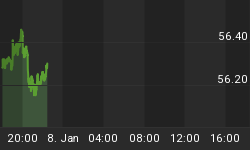On Thursday, the Conference board released its index of Leading Economic Indicators (LEI) for March. The Conference Board reported that the LEI fell by 0.1% in March after a decline of 0.5% in February. On a quarterly average basis, the LEI in Q1:2005 is up only 1.5% on a year-over-year basis. The year-over-year growth in the LEI has been trending lower after hitting a cyclical peak growth of 9.0% in Q1:2004. Chart 1 shows that the year-over-year growth in the LEI has done an excellent job of foreshadowing the onset of recessions. That is, a steady downtrend in the year-over-year growth in the LEI has been a warning of an imminent recession.
Chart 1
Index of Leading Economic Indicators
(year-over-year percent change of quarterly averages)
distance between vertical lines denote periods of economic recession
There have been two notable exceptions. The LEI contracted on a year-over-year basis from Q4:1966 through Q2:1967 although no recession was declared by the NBER. However, "unofficially," this period was referred to as the mini-recession of 1966-67. The Fed quickly began cutting the funds rate in December of 1966, thereby averting an official recession. Another instance when the growth in the LEI was trending sharply lower and no official recession occurred was 1995, when the year-over-year change in the LEI bottomed out at only 0.9 in Q4:1995. Again, a quick reversal in Fed policy, starting with a funds rate cut in early July of 1995 averted a recession.
Given this economic forecasting track record of the LEI, it is curious at why it gets so little respect. I searched the Friday print edition of the WSJ and saw no mention of the Conference Board's release of the March LEI data. It is interesting that such a student of the business cycle as former Fed Chairman Greenspan seemed to show so little respect for the LEI. For example, a peak in the business cycle was reached in July 1990. In the transcript of the July 2-3, 1990 FOMC meeting, Greenspan said: " In the very near term there's little evidence that I can see to suggest that in fact the economy is tilting over." And then at the August 21, 1990 FOMC meeting, the transcript shows Greenspan saying: "I think there are several things we can stipulate with some degree of certainty: namely, that those who argue that we are already in a recession I think are reasonably certain to be wrong in the sense that we do have weekly data that suggest, as others have mentioned. that up until perhaps a week or so ago there was no evidence of deterioration in what was a very sluggish pattern." The LEI had begun to contract on a year-over-year basis in the second quarter of 1989 and continued to contract through the second quarter of 1991. If Greenspan had paid attention to the behavior of the LEI he might not have been so sure of his "no recession" comments at the July and August FOMC meetings.
Year-over-year growth in the LEI peaked at 5.6% in Q4:1997. By Q3:2000, its growth had slowed to 1.5% -- coincidentally where it is in the first quarter of this year. But at the October 3, 2000 FOMC meeting, Fed Chairman Greenspan said: "So far as I can judge, there is nothing terribly significant going on in the economy excluding energy." The LEI began contracting year-over-year in Q4:2000. Again, had Greenspan been more respectful of the message from the LEI he might not have been as sanguine about the outlook for economic activity.
Not surprisingly, the LEI is not only a good predictor of the cyclical behavior of economic growth, but also a good predictor of the directional behavior of the fed funds rate. This is shown in Chart 2. The year-over-year percent change in the LEI tends to lead the year-over-year basis point change in the fed funds rate by three quarters. Given the current downward trend in the LEI, if history is any guide, we will likely be looking at year-over-year declines in the fed funds rate next year.
Chart 2
Y/Y % Chg. in LEI* vs. Y/Y Basis Point Chg. in Fed Funds Rate
LEI is advanced by 3 quarters
















